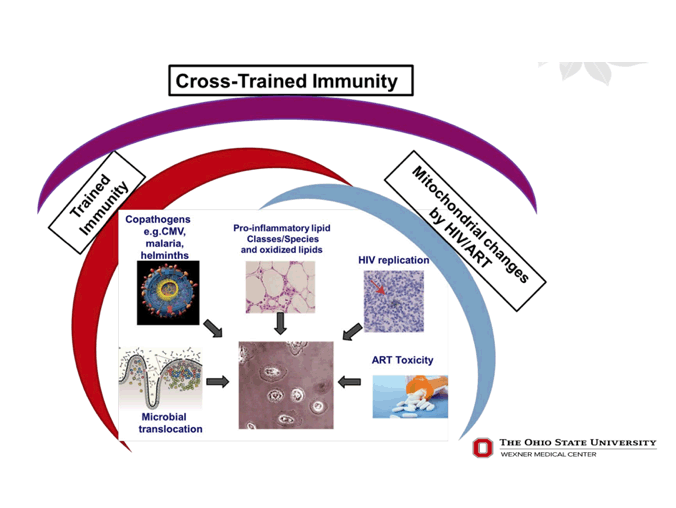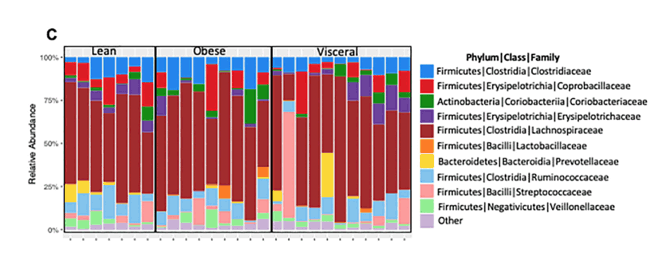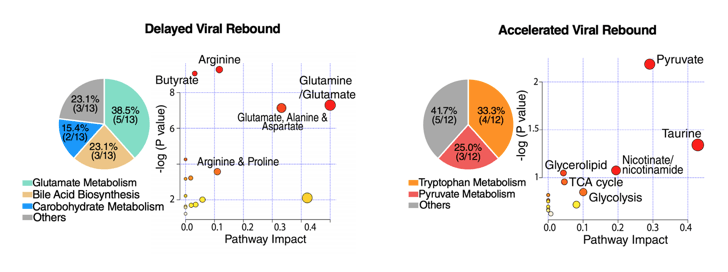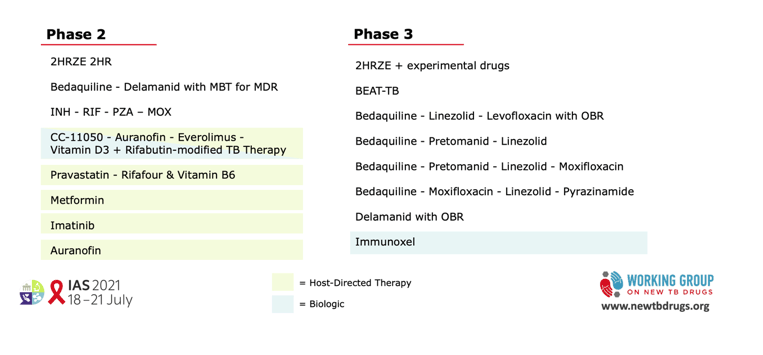 |
 |
 |
| |
COMORBIDITIES AND AGEING; IMMUNOMETABOLISM AND
HIV PATHOGENESIS; TB & HIV; HIV Natural Controllers
|
| |
| |
Christina K. Psomas
European Hospital Marseille, Marseille, France
The session "Growing old with HIV: Co-morbidities and ageing" assessed the interplay between HIV, co-morbidities and age-related illnesses. Nicholas T. FUNDERBURG (The Ohio State University - School of Health and Rehabilitation Sciences, United States) talked about mutual interaction of immunosenescence and HIV.
First in 2009 (McClelland et al, Am J Cardiol 2009) this group reported increased levels of atherosclerosis in people with HIV (PWH) using CT-Scans and Framingham 10-Year risk score, stating than the arterial age calculated in PWH was approximatively 20 years older than the physical age. Moreover, increased biomarkers of inflammation were observed among PWH with high CAC values (CAC>400 vs CAC=0), namely markers of endothelial-cell activation, inflammation, gut-barrier dysfunction, monocyte activation and coagulation.

In a separate project (Bowman et al, PLoS Pathogens 2020) the same group reported that monocyte-derived macrophages (MDMs) from ART-treated PWH have altered transcriptional, functional and phenotypic profiles compared to cells from HIV- individuals. These cells from PWH produced increased inflammatory cytokines, reactive oxygen species and matrix metalloproteases and had increased lipid uptake compared to cells from people without HIV.
Further, cells from ART treated PWH had decreases in genes related to mitochondrial function, cell cycle progression and metabolic capacity, as well as decreased expression of the costimulation molecules CD40 and CD80 and increased expression of the suppressive protein PDL-1, which may be evidence of a senescent or exhausted phenotype in PWH.
In more recent experiences they also assessed the metabolic fuel dependence and capacity of MDMs using the Agilent Fuel Flex Assays. Overall, they reported an increased dependence on glucose as a fuel source for cells from PWH and a reduced capacity to meet their energy demands. These macrophage profiles are somewhat like those that were reported in cells that have undergone trained immunity (a mechanism whereby metabolic, epigenetic and transcriptional alterations in innate immune cells regulate their responsiveness to repeat exposures of TLR ligands) (S Saeed et al, Immunogenetics). MDMs from PWH are differentially responsive to exposure to TLR ligands for TLR2, TLR4 and TLR5 (E Lachmandas Nat Microbiol 2016; van der Heijden JCI Insight 2020). Exposure to microbial products and trained immunity likely contribute to altered cellular function in PWH, along with antiretroviral therapy that may also modify immune profiles, induce a senescent or stressed phenotype in multiple immune cell types, remodulation of gene expression and mitochondrial function (MV Singh et al, Circulation; M Corencak JCI Insight 2019). Even in HIV- individuals differentiation of MDMs in the presence of tenofovir disoproxil fumarate and emtricitabine in the PrEP context resulted in changes in surface protein expression, increased lipid uptake, reactive oxygen species production, and mitochondrial dysfunction.
Lastly the group explored consequences of differentiating MDMs from people without HIV in the presence of pooled serum from different donor groups (HIV- individuals, HIV+ ART suppressed, HIV+ ART-unsuppressed) (Bowman et al, PLoS Pathogens 2020). Researchers found that exposure of PBMC from HIV- individuals to pooled serum of PWH resulted in significant changes in MDMs phenotype, function and gene expression pathways, including pathways related to innate immune responses and information, decreased expression of wound healing genes, and increased interferon responsive gene profiles. However, the profiles that were induced by PWH receiving ART and PWH who were not receiving ART were different. Indeed, only ART-treated PWH influenced decreasing CD163 expression, increasing HLA-DR expression and increasing lipid uptake, while pooled serum from untreated PWH had modest effects on HLA-DR expression and lipid uptake (despite high levels of HIV-1 and inflammatory cytokines), suggesting a potentially important role of ART in remodulation of MDMs gene profiles and function. The research group proposed that in ART-treated PWH recognized drivers of immune activation (HIV, microbial translocation, copathogens and altered lipid profiles) likely drive inflammation and train immunity, while at the same time ART likely drives mitochondrial dysfunction and immune dysregulation and senescence defining a unique immune profile called cross-trained immunity, as it is not falling to a clear traditional pathway and has significant consequences for vaccine and pathogen responsiveness and may contribute to comorbid conditions in this population.

IMMUNOMETABOLISM AND HIV PATHOGENESIS
Janine Trevillyan (Austin Health, Australia) inaugurated the Immunometabolism and HIV pathogenesis session with an overview about obesity and immunometabolic consequences in HIV.
Obesity and overweight are common and concern 27% of PWH in low- and middle-income countries (Patel et al, AIDS 2018). Obesity is a complex physiological condition associated with increasing age, lower high school education and socio-economical background, female gender and ART.
Weight gain is common in the context of ART, refers to an average of 2.5 kg in the 1st year post-ART initiation and is associated with lower mortality to those who were not initially overweight (Yuh CID 2015). But in the case of middle aged, well-controlled individuals that are switching towards integrase inhibitors, 20% of them are concerned by more than 10% weight increase, and this class effect seems to be more pronounced with dolutegravir and bictegravir (Norwood JAIDS 2017), especially when associated with TAF (Venter 2019 NEJM). Obesity in PWH is associated with higher serum inflammatory biomarker levels (Koethe 2013 AIDS Res and Hum Retrovir) and monocyte activation (Conley AIDS 2015). Obesity in PWH is also associated with a dysbiotic gut microbiome related to the elevated inflammation seen especially in visceral adiposity (Gogokhia JAIDS 2020). Therefore, there are obvious correlations between obesity and health endpoints in PWH, such as diabetes and cardiovascular disease (Herrin JAIDS 2016), as well as some early data that Integrase Inhibitors are associated with diabetes (O'Halloran, CROI 2021, Abstract 516).

Asier SAEZ-CIRION (Institut Pasteur, France) described perspectives of HIV cure via metabolic reprogramming of cells that can influence HIV pathogenesis (Saez-Cirion and Sereti, Nat Rev Immunol 2021). In HIV Controllers (HIC) natural control of HIV infection is explained by a lower frequency of infected cells compared to other PWH, because a large proportion of genome-intact proviral sequences are in regions showing weaker transcriptional activity because of immune pressure (Yiang Nature 2020; Woldemeskel EBiomedicine 2020). CD8+ T cells probably play an important role in this immune pressure seen in HIC, at least in cocultures in vitro where CD8+ T cells from HIC can efficiently eliminate autologous HIV-infected CD4 T-cells, compared to CD8+ T cells of non-controllers. This capacity to eliminate infected cells is also engraved in central-memory population, that present striking differences at the transcriptional level between HIC and non-controllers despite the same phenotype and which can be identified very early after infection (Angin et al Nat Metabolism 2019). Overall, CD8+ T cells from non-controllers seem to be primed for activation and glycolysis, whereas the same cells from HIC were primed for survival, antiviral potential and transcription of molecules known to counteract glycolysis. From a functional point of view, CD8+ T cells from non-controllers curry higher Hif-1 protein levels, while CD8+ T cells from HIC can capture higher rates of fatty acids vs glucose explaining a better survival in cultures in the absence of glucose. Moreover, HIV-specific CD8+ T cells from non-controllers basically rely on glycolysis, whereas HIV-specific CD8+ T cells from HIC rely both on glucose and mitochondrial activity. In conclusion, CD8+ T cells from controllers and non-controllers have very clear differences in their molecular program at the single cell level; CD8+ T cells from HIC have a memory-like phenotype with metabolic plasticity (enhances the capacity of cells to function in conditions of stress), stemness, broad antiviral potential, and are primed for survival, while CD8+ T cells from non-controllers even with a memory-phenotype have glucose-dependency, exhausted T-cell profile and restricted antiviral potential. In order to metabolically reprogram CD8+ T cells from non-controllers to enhance their stemness and antiviral potential and make them behave as cells from HIC, research group used IL-15 that is known to enhance mitochondrial neogenesis in CD8+ T cells (ex vivo metabolic reprogramming). Upon pretreatment of IL-15 they have found enhancement in fatty-acid capture and maximal respiratory mitochondrial capacity, increase the frequency of HIV responses without affecting other immune responses, and finally enhance HIV suppressive capacity. Other strategies used to induce HIC T cell phenotype included GSK3 inhibitors that induce central-memory populations when treating CD8+ T cells from non-infected donors, with less expression of activation and exhaustion markers upon activation and higher levers of markers of survival, with restrained proliferation and metabolic activity but maintained antiviral activity.
Mohamed Abdel-Mohsen (The Wistar Institute, University of Pennsylvania, United States) did an overview of functional glycomics in HIV. Studying host glycans allows understanding of viral-host interactions during ART-suppressed HIV infection. For instance, non-invasive plasma glycomic and metabolic biomarkers may give evidence of post-treatment control of HIV (Giron L et al Nat Comm 2021). In the subgroup of post-treatment controllers (PTCs) who can maintain viral remission after stopping ART therapy, it is interesting to identify plasma biomarkers while on ART predicting both duration and the probability of remission after stopping therapy. Indeed, experiences from 3 independent cohorts of analytical treatment interruptions (ATI) they identified plasma glycomic and metabolic biomarkers that could predict delayed or accelerated rebound after stopping therapy (Giron L et al mBio 2021; Giron L et al AIDS 2020). These biomarkers were not randomly distributed but belonged to a specific set of host glycomic and metabolic pathways. In particular, markers that predicted delayed viral rebound were all implicated in anti-inflammatory host pathways, while markers predicting accelerated rebound were implicated in pro-inflammatory pathways, including several metabolites that have been associated with gut microbial dysbiosis, such as TMAO and metabolites of the tryptophane catabolisme pathway that have been associated with many HIV-associated comorbidities.

Several of the studied pre-ATI plasma glycomic and metabolic biomarkers were able to distinguish PTCs from non-controllers (NCs). Using a machine learning algorithm to choose a selected set of markers than can be combined in a multivariable logistic model, this model based on 6 glycans and 1 metabolite could predict the probability of viral rebound by 97.5 % and separate PTCs from NCs before ATI quite accurately. In conclusion, the same host pathways that are associated with both gut microbial dysbiosis and HIV-associated comorbidities are also associated in higher level of HIV persistence and accelerated viral rebound after ATI. When they tested these biomarkers in vitro and ex vivo they found them to modulate latent HIV reactivation.
In addition, authors showed that cell-surface glycans and glycan-lectin interactions mediate several immunological processes in T cells and NK cells for instance (Colomb F et al, Curr HIV/AIDS Rep 2019), playing a critical role in cell functions and fate. They characterized cell-surface glycomic signatures of HIV-infected cells that may affect cell trafficking and therefore HIV persistence. For instance, Sialyl-LewisX glycoantigen was enriched on cells from HIV-infected ART-suppressed individuals with persistent HIV-transcription during therapy (F Colomb et al Cell Reports 2020) comparatively to HIV-infected transcriptionally inactive cells. Sialyl-LewisX glycoantigen is a cell extravasation mediator which plays an important role in lymphocyte trafficking between the blood and tissues because it is the ligand for E- and B-selectins on endothelial cells and helps for instance cancer cells to metastasize. In the same way, it could help HIV-infected transcriptionally active cells to move from the blood to tissues where HIV persists, but this phenomenon is not induced by T-cell activation but rather directly by HIV itself.
TB and HIV
Gavin Churchyard (Aurum Institute, South Africa) inaugurated the TB and HIV session, with an overview about the current state of the HIV-associated TB epidemic. Globally, 8.2 % of TB persons are HIV-coinfected and the risk of developing TB among PWH is 18-fold greater than in the general population.
The greatest burden of HIV-associated TB occurs in Subsaharian Africa (SSA), even if the WHO Africa region has done a great progress with a reduction of 16% in TB incidence per year and a decline of TB deaths amongst HIV-positive persons by 76% (69% globally), due to expansion of HIV and TB prevention care services.
Globally, almost 25% of the world population is infected with TB, while in SSA with a high HIV-prevalence 30-40% of people are infected with TB (Churchyard CROI 2021, Abstract 111). The risk of TB in HIV-positive individuals varies by TB-infection status (Chaisson L AIDS 2020) and results of the Brazilian THRio trial suggest that TB preventive therapy should be provided to all PWH, regardless of the CD4 cell count and their tuberculin skin test (TST) status. A secondary analysis of the ZAMSTAR TB prevalence survey data showed that subclinical TB accounted for 45% of all prevalent TB and that HIV infection was independently associated with 3-fold greater odds of subclinical TB. In high HIV prevalent settings, scaling up ART and TB preventive services to people with HIV contributes to population level TB control.
Melvin Spigelman (TB Alliance, United States) presented an overview of the new studies on new drugs and regimens used in the treatment of active TB, both drug-sensitive and drug-resistant.
The New regimens display a heavy dependence on the newest approved TB drugs, namely bedaquilline, delamanid and pretomanid which are incorporated in most ongoing trials.
New TB approaches in late stages of clinical research, such as biologics and host directed therapies include further shortening of the duration of TB treatment (study 31 for a 4-month rifapentine and moxifloxacin-based treatment of drug sensitive TB and Nix-TB testing the 3-oral drug BPaL-bedaquilline/pretomanid/linezolid regimen against highly drug-resistant TB administered for 6 months) and decreasing the morbidity and sequelae of TB which occur rather commonly (Dorman et al, NEJM 2021; Conradie et al, NEJM 2020). The Nix-TB trial resulted in a cure rate of approximatively 90% of the BPaL regimen compared to a 30% efficacy of the traditional strategy. ZeNix trial is an ongoing follow-up study prompted to optimize the use of linezolid, and which is testing the efficacy of lower doses or shorter durations of linezolid in order to achieve less side effects (Conradie F IAS 2021 Abstract OALB01LB02). Given the present pipeline of potential drugs the future of TB including a universal regimen that would be curative in less than 3 months could be within striking distance.

Claudia Denkinger (Heidelberg University Hospital, Germany) did an overview on the advances of TB diagnostics development. Currently there are about 10 million cases of TB annually worldwide, of which 2.9 million constitute a gap in diagnosis, and 500,000 cases of drug-resistant TB (DR-TB) of which 49% are not detected.
WHO end TB goals aiming a universal health coverage and prevention of reactivation preclude improvement of early diagnosis and innovation in diagnostics (fully integrated, linking to treatment and systems strengthening).
Non-sputum-based tests for diagnosis or triage may help achieve an early identification of patients with TB or at high-risk of TB on easy to access samples. For instance, the FujiLAM assay increases the sensitivity of TB-diagnosis in HIV-participants of about 35% over the existing Xpert sputum assay. Interestingly, the FujiLAM assay displays a higher relevance for HIV-positive patients, especially in the case of extra-pulmonary TB. Triage testing is also crucial in order to improve the cost of the diagnostic pathway; the aim of triage tests is to identify people needing a confirmatory testing.
Regarding molecular testing the MOLBIO assay which is a serious competitor to Cepheid on sputum really seems promising. Finally, we can leverage innovation in sampling methods (new swabs, face mask sampling, saliva, split and gargle testing), drug susceptibility testing (Xpert MTB/XDR assay)(Penn-Nicholson Lancet ID under review) and sequencing that can allow informing individualized therapy for resistant TB.
|
| |
|
 |
 |
|
|